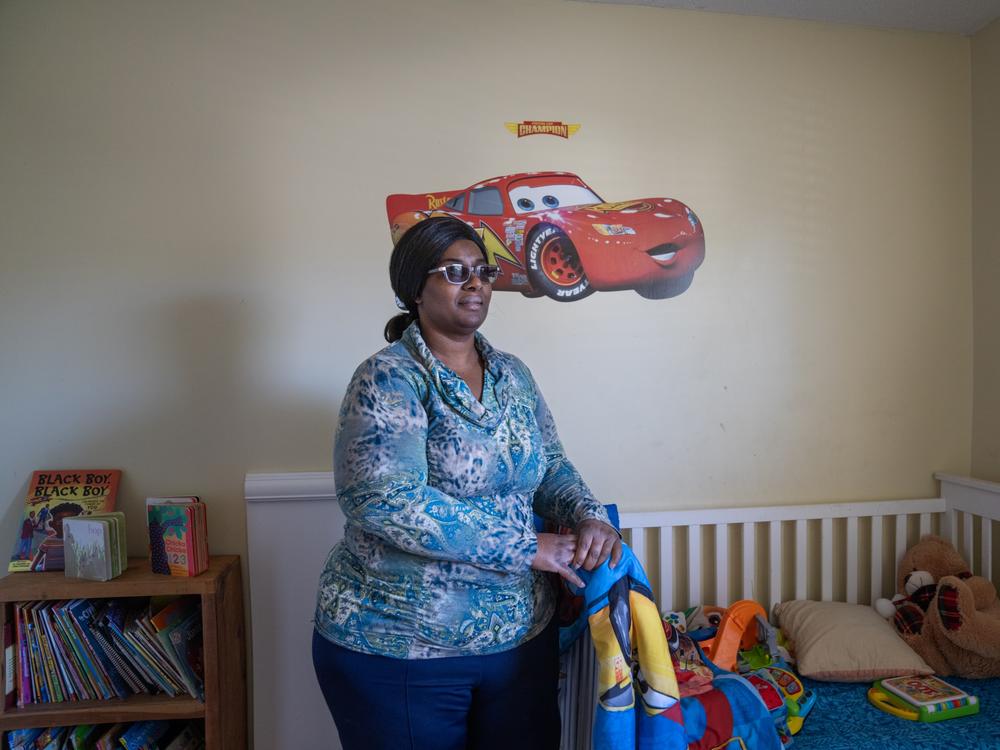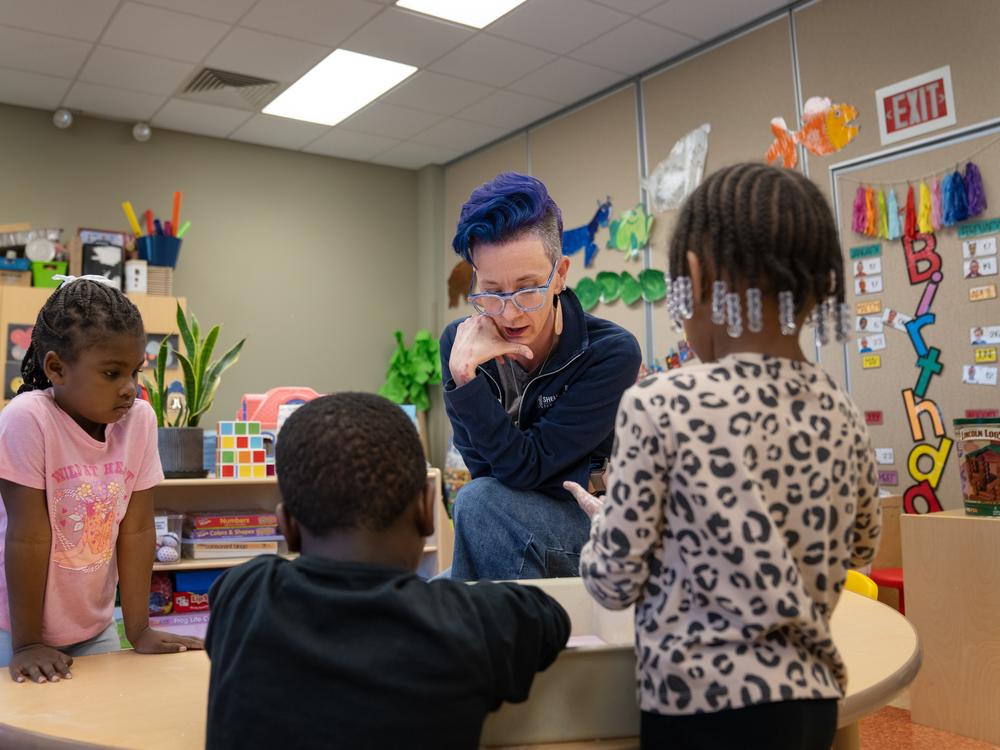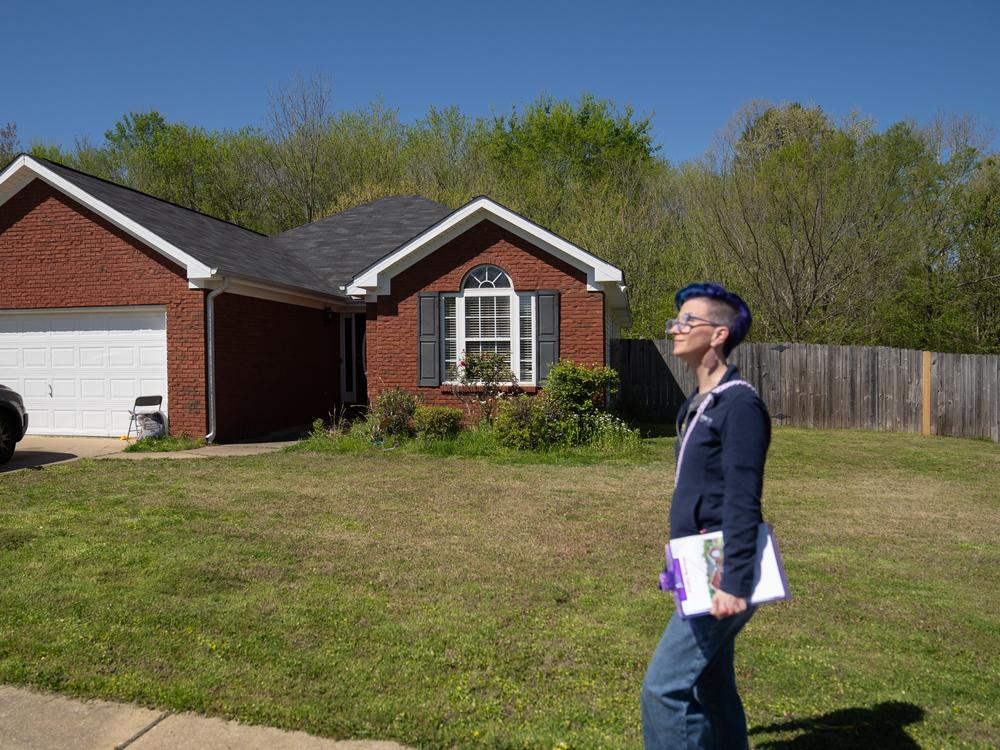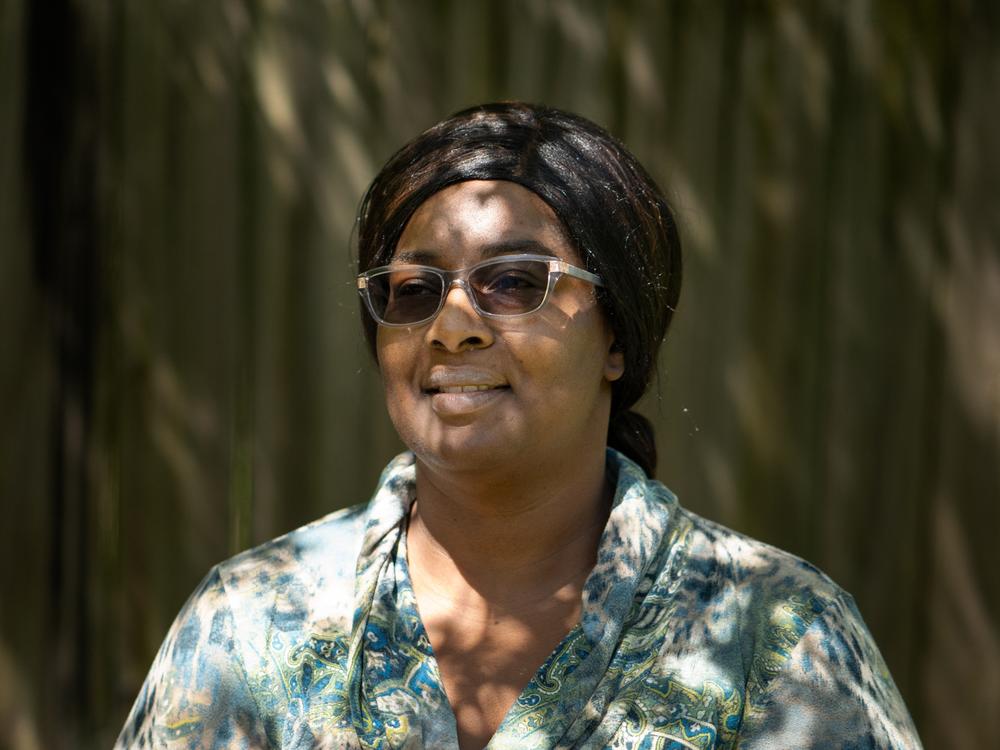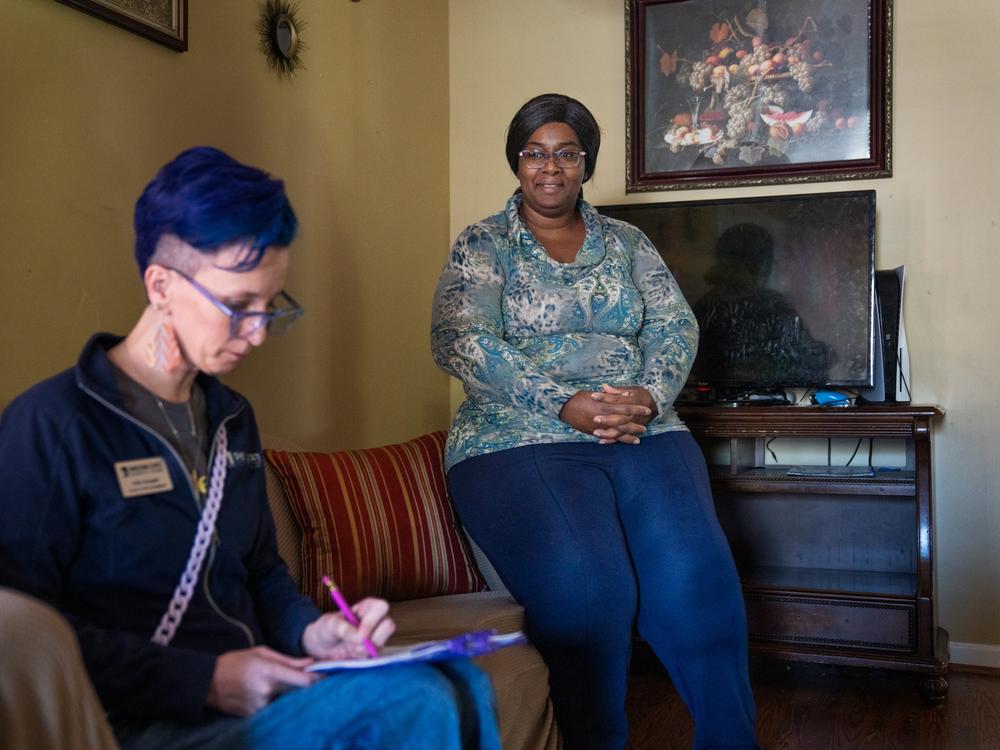Section Branding
Header Content
To help the economy, an Alabama county is betting on home-based child care
Primary Content
TUSCALOOSA, Ala. — Lakethia Clark has spent most of her adult life taking care of children, first at a church day care and later in a child care center. She loves children, but after 15 years, she was getting paid too little and looking after too many kids.
So like many child care workers, she quit. Clark became a housekeeper at a hospital, which paid better, but she missed her old profession.
"It kind of broke my heart," she says. "I miss my babies."
She had long thought about starting her own child care business but always found the licensing process and the startup costs daunting.
Today, however, Clark is getting ready to return to a line of work she loves — on her own terms. She's starting her own small business, caring for as many as six children. And she's doing it right in her own home.
For months, she has been working hard to turn her three-bedroom ranch house and her tree-lined backyard into a children's wonderland.
Clark is among the first participants in a program called 3by3. It's the brainchild of Holly Glasgow, a longtime child development educator at Shelton State Community College.
Her vision for the program: dramatically growing the number of small, home-based child care businesses, formally known as family child care homes. It's a program that could prove important for Alabama, by providing more child care options to help boost the state's workforce.
Home-based child care is not new, but Glasgow's exhaustive efforts to provide wrap-around training and guidance, elevating the often invisible child care workforce, have drawn attention and even visitors from states including Colorado and California.
To go to work, parents need child care
The initiative is one of many being piloted around the U.S. as federal and state governments, along with the business community, have come to recognize child care as essential to economic growth.
It's an especially pressing issue in Alabama, a state with one of the country's lowest labor force participation rates.
To get her program going, Glasgow got creative, "blending and braiding" funding from a number of sources, including the federal Workforce Innovation and Opportunity Act, which aims to help job seekers move into high-quality careers.
Other funders include the Chamber of Commerce of West Alabama as well as the Women's Foundation of Alabama, a philanthropic organization focused on accelerating economic opportunity for women.
"It's an interesting narrative shift, that child care isn't just on the mom," says Lillian Brand, vice president of external affairs at the Women’s Foundation of Alabama. "It's really on the entire economy in order to keep us all moving forward."
Child care needs are severely unmet
The need for more child care is evident in the numbers. Glasgow estimates Tuscaloosa County has over 12,000 children under age 5 but just over 3,000 child care spots.
Some of those spots are at the community-based pre-K center on the campus of Shelton State, which Glasgow oversees.
While a couple of kids paint pictures at an arts and crafts station, others check in on caterpillars on their journey of metamorphosis. Across the room, more children take turns playing customer and shopkeeper in a make-believe flower shop.
"Happy, healthy, safe is our goal," says Glasgow.
She would love for every young child in Alabama to have a spot at a center like this one. But she knows that's impossible. The main impediment is cost.
When an Alabama nonprofit foundation approached her with a fundraising proposal and asked how many child care centers could be built with $10 million, she told them: less than one.
"They were floored," she says.
So instead, Glasgow is focusing her efforts on family child care homes. She believes these small businesses can achieve the same level of quality as larger centers but at a much lower cost and in a way that may better suit Tuscaloosa's working parents.
A diversity of child care needs
Among the top employers in this region are hospitals and manufacturers, including Mercedes-Benz and the food company Smucker's, which has been recruiting workers for a brand-new plant not far away.
Glasgow points out that these employers need workers around the clock, but few child care providers offer care in the evenings, on weekends and overnight.
Family child care homes, which are typically run by women who care for their own children and a handful of others, can be more flexible with their hours. They can also provide a more homelike environment, which many parents who work overnight shifts prefer, Glasgow says.
"Your kids still go to bed in a bedroom," she says. "They still have breakfast at the kitchen table."
"Can't wait"
The first cohort of 3by3 participants wrapped up their coursework this spring. This included five intensive weeks of classes on child development, health and safety, and how to run a small business.
On top of that, there are the home visits.
On a recent sunny morning, Glasgow headed to Clark's home on a corner lot to help her reimagine her living quarters as play and learning spaces and to ensure that everything is up to code.
Glasgow works quickly, whipping out a laser measuring tool as she sketches a floor plan.
"Miss Holly ... that lady is awesome," says a smiling Clark.
Clark lays out her vision for her formal living room: one sofa moved to the side, another one taken out to make room for children's tables, a couple of carpets, and shelves for toys and books.
"I can't wait to put stuff on the walls," she says.
Glasgow has $5,000 to $10,000 to spend on furniture and supplies for each new family child care home. Paths for Success, the nonprofit foundation that originally approached Glasgow about building child care centers, provides the health and safety materials, including fire extinguishers, hardwired smoke detectors, flashlights, and cribs and cots.
It's the assist Clark needed to get her business off the ground. Before now, she says, her finances always got in the way.
Although she had worked in child care for years, Clark's hourly wage never topped $13.50 an hour. For a while, she worked a second job at Taco Casa to save enough money for the down payment on her house.
Now, she is looking forward to becoming a small-business owner. There are tax benefits, including being able to deduct part of her mortgage as a business expense. She may qualify for a new Alabama tax credit for child care providers.
Best of all, she'll get to be her own boss.
Looking out over her spacious, shady backyard, she imagines children covering her wooden fence with chalk drawings, something she loved watching kids do at her last child care job.
"The owners of the day care used to get so mad," she says, laughing. "It's just artwork! It's going to disappear."
Already, parents she knew from her old job have been calling her, hoping to send her their younger kids.
"They know what type of worker I was," she says. "They know I always put the kids first."
With all her paperwork submitted, Clark is hoping to get final clearance this summer, in time to welcome kids into her home.
